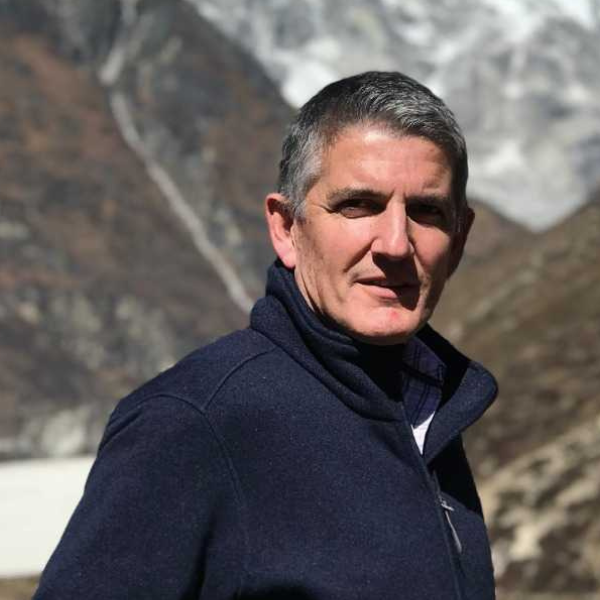
Meet the Expert – Lt Gen Sir Nicholas Pope KCB CBE
Welcome to 'Meet the Expert', our series bringing you informative interviews with Armed Forces researchers, policy makers and service providers. Read on to learn about current work, aspirations for progress and future work, and insights into expert perspectives on key issues impacting ex-Service personnel and their families.
 In this issue, we interviewed Lieutenant General Sir Nicholas Pope KCB CBE, Chair of the Confederation of Service Charities (COBSEO). As Chair, Sir Nicholas acts as a voice for the service charitable sector within the UK Government and private sector and actively encourages collaboration and connection between Service charities.
In this issue, we interviewed Lieutenant General Sir Nicholas Pope KCB CBE, Chair of the Confederation of Service Charities (COBSEO). As Chair, Sir Nicholas acts as a voice for the service charitable sector within the UK Government and private sector and actively encourages collaboration and connection between Service charities.
1. Please tell us about your background and how you came to be involved in work relating to the Armed Forces Community.
How do you eloquently compact a life story into a short space?
I served with the Colours [1] for nearly forty years. I break down this period into three bite-sized chunks. Career Stage One was spent with soldiers on Regimental duty in Hong Kong, Germany and Cyprus. Career Stage Two saw me becoming a tiny ‘staff-officer cog’ in a very large defence engine – I saw seven postings ranging from Major to Major-General in the Ministry of Defence (MoD)! In the twilight stages of my career, I moved to Army HQ in Andover, firstly as Director of Capability and latterly as the Deputy Chief of the General Staff. For my sins, I was also the Master of the Royal Corps of Signals and the Colonel Commandant of the Brigade of Gurkhas. I served on operations in Bosnia and for a year in Afghanistan. My Service taught me the value of evidence-based decision making, and it also emphasised the importance of people to Defence outputs – what the Military call our ‘Centre of Gravity’.
Leaving the Army during lockdown was an ‘interesting’ experience. I naturally gravitated back towards ‘service’, which I guess is part of my DNA. So, becoming Chair of COBSEO, the Service Charities Federation, always seemed a natural fit. There are some 1,750 Military charities in existence. As a membership organisation, COBSEO aims to provide a vehicle for communication, coordination and collaboration. It helps the third sector align its outputs with the government so that in simple parlance we get the ‘best bang for the buck’ in our support for the Armed Forces Community.
I was also fortunate enough to spend much of the last year working with Rick Haythornthwaite on a Review of Armed Forces Incentivisation, perhaps the most strategic examination of the Armed Forces People Function in a generation. And now I find myself in the great position of being able to mark my own homework, as Defence and the Single Services work out how best to deliver the recommendations in a systemic fashion. This will inevitably involve the support of the charity sector, so more to come!
2. What projects are you currently working on and how do they fit into the bigger picture of understanding and supporting the Armed Forces Community?
This is a big question, not least because the size of the Armed Forces Community depends on what definition you use. At its most expansive, it includes Serving personnel (both regular and reserve), their partners, their children, the Veteran community and their partners and children, and members of the bereaved community. It is global in character.
A parallel challenge is trying to work out what it is that we – collectively - are trying to do. One answer is provided by the Veterans Strategy, which has an aiming mark of making the UK the ‘best place to be a Veteran by 2028’. The Armed Forces Covenant provides a slighter broader definition - we should seek to have an Armed Forces Community which is thriving. I would build further on this – for me, our aim is 'A thriving Armed Forces Community, which is valued and respected by the nation'.
Part of our strategic challenge is understanding this complex and ever-evolving landscape so that we can best balance the demand for services (or perhaps ‘need’ is a more appropriate word) and supply. We have some really useful benchmarks in the form of Census 2021 data and MoD data on the Serving community. But we are still working out how best to ensure that we can make sense of pan-sector data and research, both from a third-sector and a governmental perspective. We need to ensure that we remain aligned and that we understand the seams and gaps
3. What other areas and issues relating to the Armed Forces Community are you especially passionate about or feel need further attention? Please expand on this and tell us about them, as much as you can.
I am passionate about the narrative. If we are to provide a national environment where young people are genuinely excited by the prospect of a Military career, we need to be able to quantify the value of Service, both at the collective and individual level. This requires us to shift the narrative from ‘mad, bad and sad’, to a more nuanced approach which recognises the need for support where it is required, but which places it in a more positive strategic context.
If we are to have a thriving Armed Forces Community, we need to establish:
- How we determine (and measure) the ‘value’ of Military Service through life, and how we assess ‘respect’;
- How we map Causality and Consequence through life (and this starts before Military service);
- How we build a relentless focus on outcomes.
4. What are your future aspirations for the impact and utilization of your or your organisation's wider work?
A short answer here. COBSEO is seeking to establish, maintain and exploit a common operating picture. Given the size of the Armed Forces Community, and the broad ambit of charities involved in providing services this is no trite endeavour.
5. What do you think are the key challenges impacting current Veterans and their families, and how do you think policy or provision of services can be best used to address them?
I’m going to start by challenging the question, as I think that our target audience is the broader Armed Forces Community.
I would also say that we have moved on a great deal over the last decade; the Armed Forces Covenant, and the Veterans Strategy (supported by the formation of the Office for Veterans Affairs) give us two useful handrails from a governmental perspective.
We have similarly been very busy in establishing a coherent evidence base – the formation of the FiMT Research Centre has been a key initiative in this respect. We have therefore laid many of the building blocks for a raft of policy initiatives across government. We should take pride in our collective achievements to date.
But there is much to do. There is always scope for improvement, not least in how we assess the outputs, outcomes, and impact of the work that we do over time. And if we can scope this in a manner which provides genuine longitudinal evidence, so much the better.
6. What do you think will be the leading challenges for the next generation of Veterans and how do you think policy or provision of services can be best used to address them?
Our evidence from the Haythornthwaite Review demonstrated that young people born in the twenty-first century place far greater emphasis on agility and agency. This will have significant strategic implications for the way Defence thinks about its terms and conditions of Service. We recommended that Defence thinks differently about what we termed a Spectrum of Service.
In the future, we might break down the boundary between regular and reserve Service, and expect more ‘zig-zag’ careers, where individuals leave and return to Military employment as a matter of norm. This will have obvious implications for how we define Military Service and the relation with the term ‘Veteran’. Similarly, we will need to determine how the substantial policy changes that this might require, map to through-life support.
7. Can you tell us about your favourite part of your current work with the Armed Forces Community and why?
Simple really. I get to interact with people. People who share a common, values-based approach. People who are passionate about the needs of the community. People who ‘get’ collective responsibility. People who have purpose. People who are invariably positive. People who care.
8. Given unlimited funding and time, what would be your dream project to undertake involving the Armed Forces Community?
I would deliver a strategic programme which met my aiming mark of ‘A thriving Armed Forces Community which is valued and respected by the nation.’ I could then retire happily. Job done!
Many thanks to Sir Nicholas Pope for sharing his insights.
Catch us next month for another interesting and informative interview with an expert from the Armed Forces Community.
Footnotes
[1] 'Serving with the colours' refers to an individual's Service in the British Army, with colours referring to regimental flags.